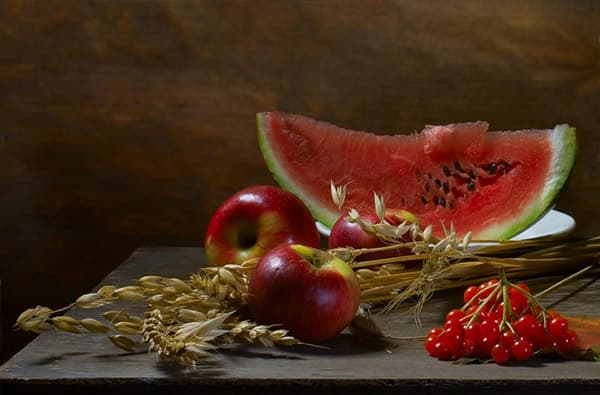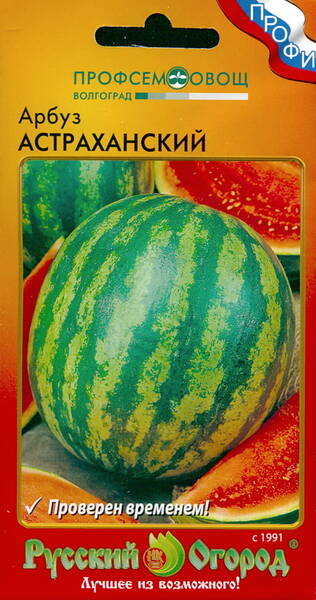Mid-season (the period from mass germination to the first harvest is 70-81 days). The plant is medium-climbing. The leaf blade is medium, bluish-green, the dissection of the leaf blade is average.
The shape of the fruit is round and elongated-round, with a smooth, slightly segmented surface. The background color is green and there is a grid on the background. The pattern is stripes of medium width, dark green in colour.
The bark is medium thick, light green, leathery. Fruit weight is 4-6 kg. The pulp is red, dense, tender, very sweet, juicy. The taste is good.
Designed for cultivation in film greenhouses and in open ground. Transportability of fruits is high. Demanding on warmth. Resistant to fuarosis and aracnose.
Sowing seedlings in late April - early May. The period for growing seedlings is 30-35 days, planting is in late May - early June. Direct sowing in the ground in April-May, when the threat of frost has passed. The plants are tied to a trellis, all side shoots are removed to a height of 50 cm, and subsequent shoots are pinched over 1-3 leaves. It is possible to grow in a free culture spread out. Watering is moderate, especially during the period of fruit ripening. Commercial yield is about 5 kg/m2. Resistant to anthracnose, affected by Fusarium wilt to a less than average degree. Planting pattern 70x150 cm.

* Salted watermelon.
Since ancient times, special importance has been attached to the harvesting of watermelons, as they are useful for anemia, liver diseases, and atherosclerosis.
In order for the salting to be of high quality, it is necessary to have a cellar with a constant temperature of +4+5°C. Watermelons are salted in oak barrels, after being cleaned and steamed with boiling water.
In addition, well-washed river sand is needed to sandwich the fruits. A 150 liter barrel requires about 70 kg of sand. It is pre-sifted, soaked in water for a day, mixed and washed until the turbidity disappears. Before laying watermelons, the sand is scalded with boiling water.
All salting operations are carried out directly in the cellar, otherwise the barrel cannot be moved. It is best to salt small watermelons (weighing 1-2 kg), with a thin crust ("Ogonyok" variety). The fruits must be selected that are ripe, but not overripe (there should be no empty space left inside near the “tail”). When tapped, these watermelons sound like they are unripe. To fill, prepare the brine as for cucumbers.
Watermelons are placed in a barrel so that they are covered on all sides with sand and do not touch either the walls of the barrel or each other. To do this, pour a layer of sand (5-6 cm) onto the bottom, then lay the fruits, leaving 3-4 cm gaps between them, which are covered with sand and compacted. A layer of sand 5-6 cm thick is again poured on top and the brine is poured along the wall of the barrel so that it does not protrude above the surface. This is necessary so that the watermelons do not float. The installation procedure is completed when 15 cm remains to the edges.
A circle of wood (cleaned and scalded) is placed on the top layer of sand, and oppression (washed stone, but not limestone) is placed on top. Then the brine is added to a level of 5 cm above the wooden circle.
During storage, care must be taken to ensure that its quantity does not decrease. After three to four months (usually by the New Year), the salted watermelons are ready.












